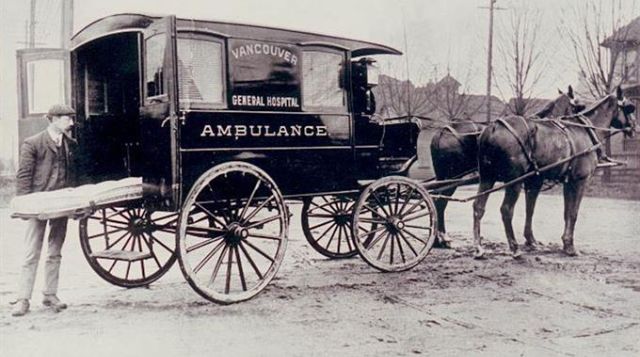History of Ambulances
The history of ambulances dates back to the mid-19th century, when the need for a more organized and efficient system of transporting patients from the site of an injury or illness to a hospital became apparent. Over the years, ambulances have evolved from horse-drawn carts to modern, high-tech vehicles equipped with state-of-the-art medical equipment and staffed by highly trained medical professionals.
Early Ambulances
The first known ambulance was used in Paris in the 1850s. This ambulance was a horse-drawn cart equipped with basic medical supplies and staffed by volunteer drivers. This system was later adopted in other cities around the world, including London and New York. Despite their limited capabilities, these early ambulances marked a significant step forward in the treatment of the injured and ill, providing a means of transporting patients from the site of an emergency to a hospital for treatment.

Motorized Ambulances
The advent of the automobile in the early 20th century marked a major turning point in the history of ambulance services. The first motorized ambulance was introduced in 1899 in New York City, and soon after, other cities around the world began to adopt motorized ambulances as well. The increased speed and mobility of these vehicles allowed for faster response times and improved patient care, particularly in rural areas where horse-drawn ambulances were less practical.
Evolution of Ambulance Services
As the 20th century progressed, ambulance services continued to evolve and expand. The development of new medical technologies and techniques, such as cardiopulmonary resuscitation (CPR) and defibrillation, led to the creation of advanced life support (ALS) ambulances, which were equipped with more sophisticated medical equipment and staffed by trained paramedics.
In addition, the increasing specialization of medical care led to the creation of specialized ambulance services, such as air ambulance services and critical care transport services. These services provide a higher level of medical care to patients in need, and are often staffed by highly trained medical professionals, including physicians, nurses, and paramedics.
swiss fake rolex yacht-master watches at www.swissreplicas.io featuring sporty elegance.
Modern Ambulances
Today, ambulances are highly sophisticated vehicles equipped with state-of-the-art medical equipment and staffed by trained medical professionals. The use of GPS and other technologies has also made it possible for ambulance services to respond to emergencies more quickly and efficiently, improving patient outcomes and saving lives.
In addition, the development of telemedicine and mobile health technologies has allowed ambulance services to provide a higher level of care to patients, even before they reach the hospital. For example, ambulance personnel can now transmit patient data, such as vital signs and electrocardiogram (ECG) readings, to the hospital in real-time, allowing medical staff to prepare for the patient’s arrival and provide more effective care.
Conclusion
The history of ambulances is a story of progress and innovation, reflecting the ongoing efforts to improve the quality of medical care for patients in need. From the early days of horse-drawn carts to the modern, high-tech vehicles of today, ambulances have played a critical role in saving lives and improving patient outcomes. As medical technologies continue to evolve and advance, it is likely that the role of ambulances in the delivery of medical care will continue to expand and evolve in new and exciting ways.
